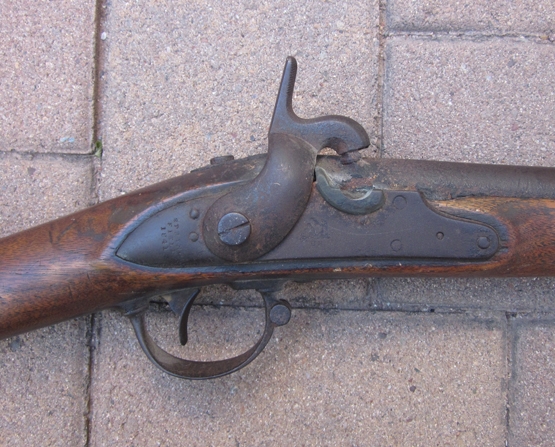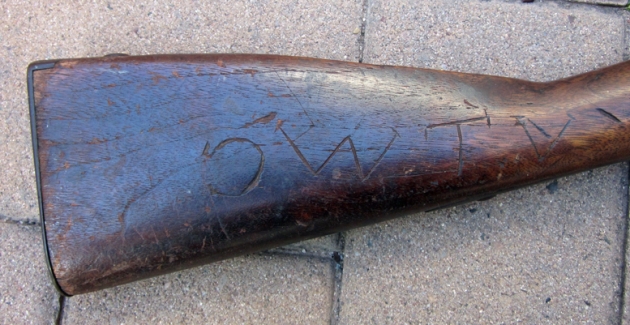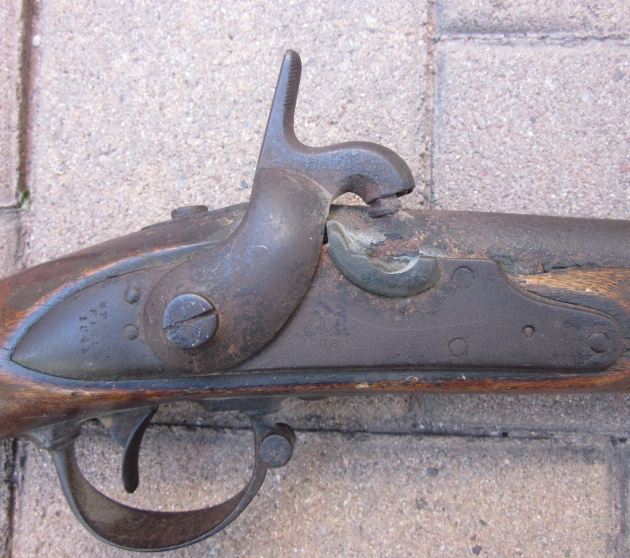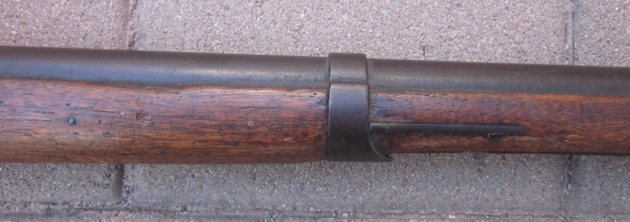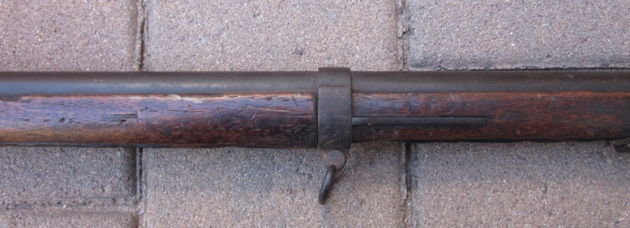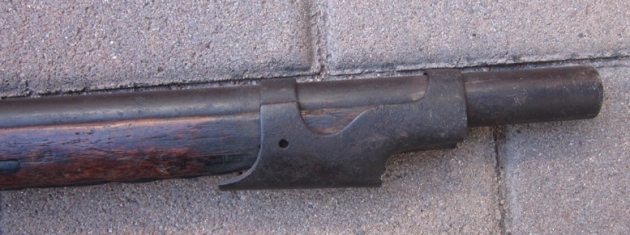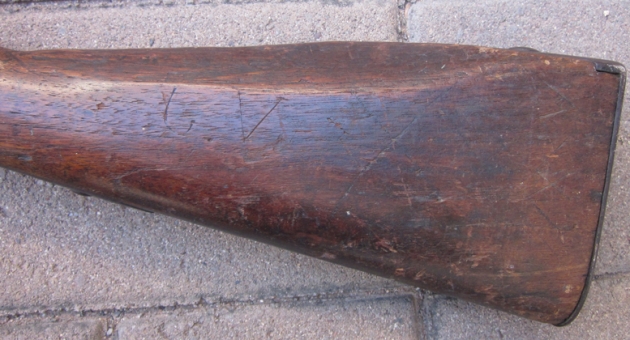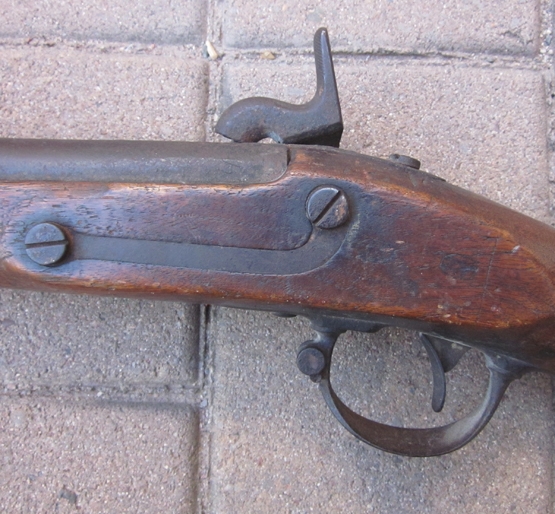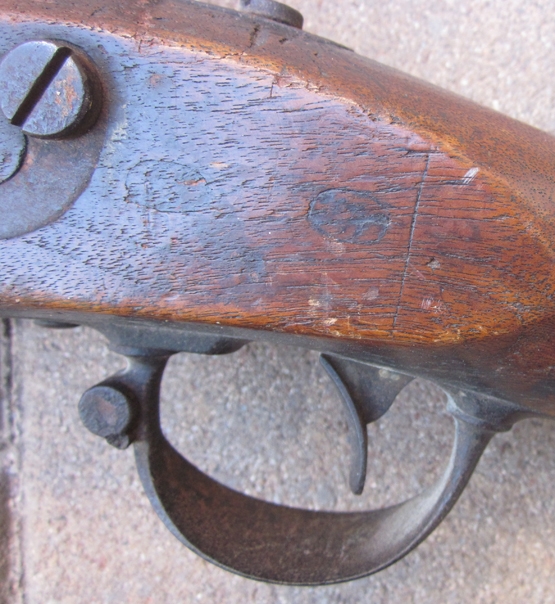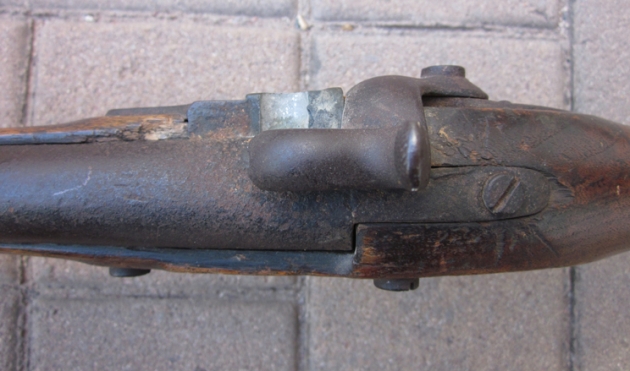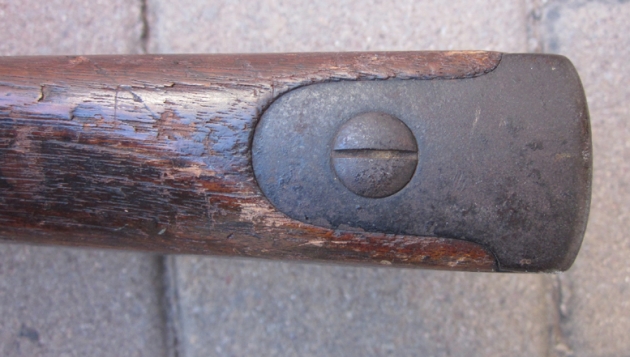US M1816 Musket, Springfield 1841, Converted to Percussion Cut-Down, Unit Marked Stock
This item is listed for historical interest only. It was listed on our site previously but has
been sold and is no longer available for purchase.
Sold for: $495.00
US M1816 Musket, Springfield 1841, Converted to Percussion Cut-Down, Unit Marked Stock
This item is listed for historical interest only. It was listed on our site previously but has
been sold and is no longer available for purchase.
Sold for: $495.00
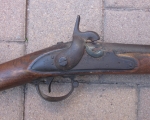 Original period manufacture. This example is one of over 1,000,000 Flintlock, .69 caliber muskets produced by the Harpers Ferry & Springfield Arsenals and assorted contractors in the years 1816-1844. Our musket bears the Springfield name over an 1841 date, stamped vertically at the rear point of the lock, with an eagle over U.S. stamped forward of the hammer. Flint ignition 1816 muskets were used extensively during the Mexican War 1846-1848. Afterwards, in 1842 percussion ignition weapons began to appear on the scene, and many of the old 1816's were then converted from flint to percussion ignition prior to the Civil War using various types of conversion styles, ours being the Belgian style conversion. They were then relegated to a secondary status weapon-wise, many of these old pattern muskets were sent to state arsenals and out West, where after the outbreak of war in April 1861 they saw combat service once again, including Southern troops. At some point in the life of this musket the barrel was shortened about 6 inches to it's current length, with the upper barrel band retained for strength and simply pinned in place without a band spring. The shortening of the barrels was a somewhat common practice for use by mounted men or wagon teamsters, as the infantry length was cumbersome and awkward, being a smooth bore, the modification wouldn't affect the accuracy too much. The sling swivels were retained, however the lower swivel was broken off at some point. All of the metal components display the same dark steel patina finish, with no evidence of replaced parts The hammer and trigger operate as they should however the lock does not hold at half-cock. Carved into the face of the stock is 5 W T V, and on the opposite side, the letters G V. Two original arsenal cartouche marks remain quite visible in the wood above the trigger guard. The ramrod is missing, and the upper barrel band is no longer secured by the altered pin used to secure it back in the day. When I purchased this old musket I really didn't give much care to it, just another cut-down musket I thought, but after handling it a bit and looking at the carvings the musket began to become an old friend. What I know is that it came out of the West, purchased here in Arizona, but things move around too, and that fact may not mean much at all. However, giving my over-active imagination free reign, let's see, 5 W.T.V. , how about 5th West Texas Volunteers? The 5th Texas Cavalry was raised in San Antonio in 1861, and saw extensive service under Sibley in El Paso, New Mexico and Arizona in 1861-62. A cut-down musket would have been quite handy for a trooper or teamster during those campaigns. Anyway, just a daydream on my part, what are your ideas?
Original period manufacture. This example is one of over 1,000,000 Flintlock, .69 caliber muskets produced by the Harpers Ferry & Springfield Arsenals and assorted contractors in the years 1816-1844. Our musket bears the Springfield name over an 1841 date, stamped vertically at the rear point of the lock, with an eagle over U.S. stamped forward of the hammer. Flint ignition 1816 muskets were used extensively during the Mexican War 1846-1848. Afterwards, in 1842 percussion ignition weapons began to appear on the scene, and many of the old 1816's were then converted from flint to percussion ignition prior to the Civil War using various types of conversion styles, ours being the Belgian style conversion. They were then relegated to a secondary status weapon-wise, many of these old pattern muskets were sent to state arsenals and out West, where after the outbreak of war in April 1861 they saw combat service once again, including Southern troops. At some point in the life of this musket the barrel was shortened about 6 inches to it's current length, with the upper barrel band retained for strength and simply pinned in place without a band spring. The shortening of the barrels was a somewhat common practice for use by mounted men or wagon teamsters, as the infantry length was cumbersome and awkward, being a smooth bore, the modification wouldn't affect the accuracy too much. The sling swivels were retained, however the lower swivel was broken off at some point. All of the metal components display the same dark steel patina finish, with no evidence of replaced parts The hammer and trigger operate as they should however the lock does not hold at half-cock. Carved into the face of the stock is 5 W T V, and on the opposite side, the letters G V. Two original arsenal cartouche marks remain quite visible in the wood above the trigger guard. The ramrod is missing, and the upper barrel band is no longer secured by the altered pin used to secure it back in the day. When I purchased this old musket I really didn't give much care to it, just another cut-down musket I thought, but after handling it a bit and looking at the carvings the musket began to become an old friend. What I know is that it came out of the West, purchased here in Arizona, but things move around too, and that fact may not mean much at all. However, giving my over-active imagination free reign, let's see, 5 W.T.V. , how about 5th West Texas Volunteers? The 5th Texas Cavalry was raised in San Antonio in 1861, and saw extensive service under Sibley in El Paso, New Mexico and Arizona in 1861-62. A cut-down musket would have been quite handy for a trooper or teamster during those campaigns. Anyway, just a daydream on my part, what are your ideas?
Photos of US M1816 Musket, Springfield 1841, Converted to Percussion Cut-Down, Unit Marked Stock
